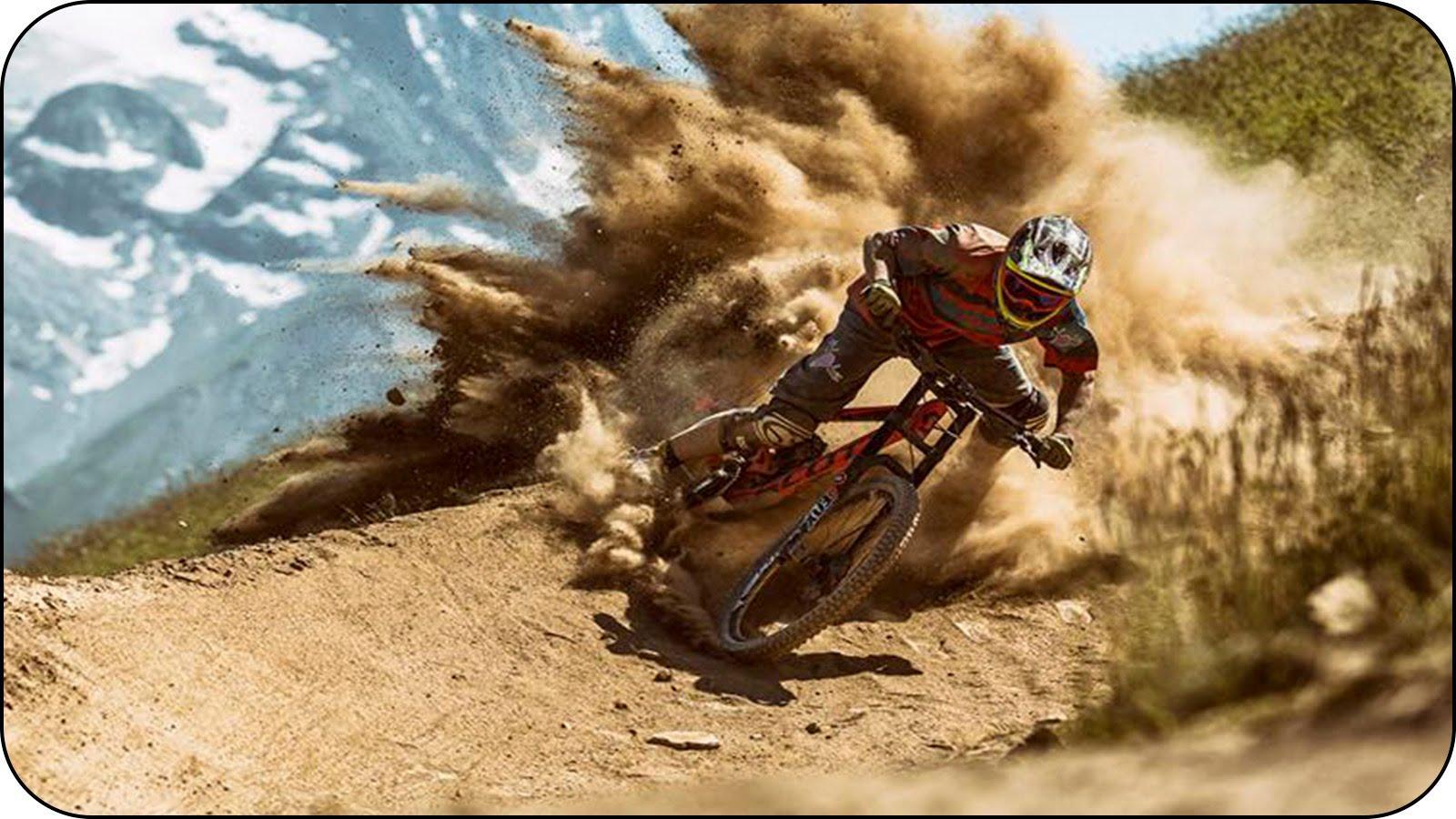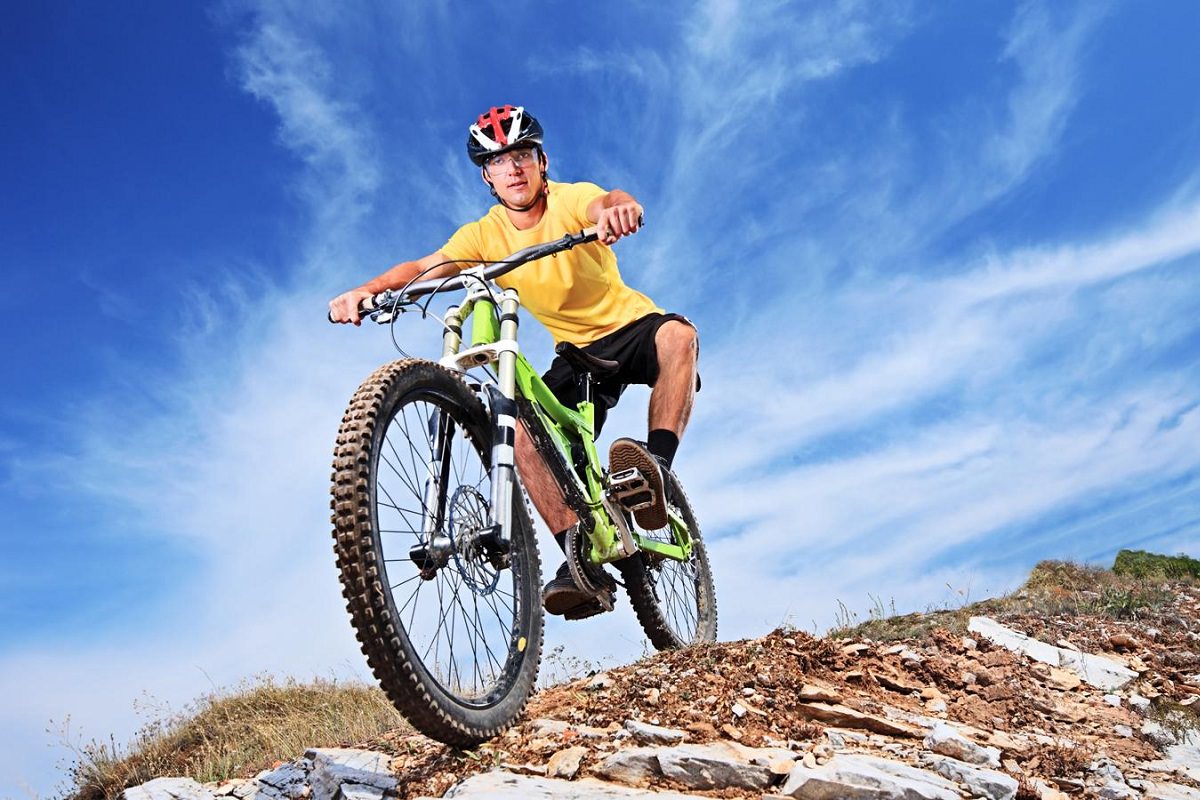Ⅰ.Introduction:

A. Embracing the exhilarating world of mountain biking: Are you ready to immerse yourself in an adrenaline-fueled adventure? Mountain biking is an exciting sport that allows you to escape the mundane and explore nature’s beauty. In this comprehensive guide, we will delve into the essentials of mountain biking, from bike handling techniques to choosing the right gear and equipment.
B. Unleashing your adventurous spirit: Mountain biking is not just a sport; it’s a way of life that unleashes your adventurous spirit. Whether you’re a beginner or a seasoned rider, there’s always room for growth and exploration in the world of mountain biking. Let’s dive into the basics and unlock the secrets of this exhilarating activity.
II. The Basics of Mountain Biking:
A. Understanding the fundamentals:
- Bike handling and balance: Mastering bike handling and balance is the key to becoming a proficient mountain biker. We will discuss techniques such as body positioning, cornering, and navigating obstacles to enhance your skills on the trail.
- Shifting and braking techniques: Knowing when and how to shift gears and apply brakes is crucial for a smooth and safe ride. We will provide tips and tricks for efficient gear changes and effective braking to enhance your control over the bike.
B. Exploring different types of mountain bikes:

- Hardtail vs. full-suspension bikes: Weighing the pros and cons of hardtail and full-suspension bikes is essential when choosing the right bike for your riding style. We will delve into the differences between the two and help you make an informed decision.
- Cross-country, trail, and downhill bikes: Understanding the different types of mountain bikes, such as cross-country, trail, and downhill bikes, will give you a better understanding of their purpose and suitability for various terrains. We will guide you through the features and benefits of each type.
III. Choosing the Right Gear and Equipment:
A. Essential safety gear and protective equipment:
- Helmet and protective gear: Safety should always be a priority when mountain biking. We will emphasize the importance of wearing a well-fitted helmet and discuss other protective gear such as knee and elbow pads, gloves, and a back protector.
- Appropriate clothing and footwear: Comfort and mobility are vital when hitting the trails. We will discuss the importance of choosing appropriate clothing that provides protection from the elements and promotes ease of movement. Additionally, we will explore the importance of wearing the right footwear to ensure optimal grip and support.
B. Tools for bike maintenance and accessories:
- Bike maintenance tools: Taking care of your bike is essential for its longevity and optimal performance. We will discuss the essential tools needed for basic bike maintenance, such as tire repair kits, multi-tools, and lubricants.
- Bike accessories for comfort and convenience: Enhance your mountain biking experience by investing in accessories that provide comfort and convenience. We will explore options like hydration packs, bike lights, bike racks, and saddlebags to meet your specific needs.
IV. Mastering Skills and Techniques:

A. Building a solid foundation:
- Bike handling skills: Developing strong bike handling skills is essential for confident and controlled riding. We will explore techniques such as body positioning, weight distribution, and balance exercises to enhance your bike control.
- Shifting and braking techniques: Efficient shifting and braking techniques are crucial for maintaining momentum and control on the trails. We will delve into gear selection, proper braking techniques, and effective modulation of speed.
B. Intermediate skills for trail riding:
- Cornering and controlling speed: Mastering cornering techniques allows you to navigate turns with precision and maintain speed. We will provide tips on body positioning, line selection, and braking techniques to enhance your cornering abilities.
- Negotiating obstacles and jumps: Conquering obstacles and jumps requires proper technique and timing. We will discuss strategies for bunny hopping, jumping, and safely navigating trail features such as rocks, logs, and drops.
C. Advanced techniques for challenging terrain:
- Tackling steep descents and switchbacks: Descending steep slopes and maneuvering through switchbacks can be physically and mentally demanding. We will explore techniques for weight distribution, line selection, and braking control to enhance your confidence on challenging descents.
- Conquering technical obstacles and jumps: Advanced riders often encounter challenging obstacles and jumps on the trails. We will discuss techniques such as manualing, wheelies, and pumping to improve your ability to conquer technical terrain.
V. Exploring Different Types of Terrain:

A. Cross-country trails and endurance riding:
- Navigating through varying terrains: Cross-country trails offer a mix of terrains, from smooth singletrack to rocky and root-filled paths. We will discuss strategies for tackling uphill climbs, maintaining speed on flats, and descending with agility.
- Building endurance and stamina: Endurance riding requires physical and mental resilience. We will provide training tips, including interval training, cross-training, and nutrition advice, to help you build the stamina needed for long-distance trail riding.
B. Trail riding and singletrack adventures:
- Mastering twists and turns on narrow trails: Riding on narrow singletrack trails demands precision and focus. We will discuss techniques for cornering, line selection, and maintaining flow on twisty trails.
- Strategies for challenging descents: Descending on technical trails requires confidence and proper technique. We will explore techniques such as body positioning, braking control, and line choice to improve your ability to tackle challenging descents.
C. Downhill thrills and gravity riding:

- Maximizing speed and control on downhill sections: Downhill riding is all about speed, control, and flow. We will discuss techniques such as pumping, weight distribution, and line selection to maximize your speed on downhill sections.
- Bike setup and safety considerations: To fully embrace downhill riding, your bike setup and safety gear must be optimized. We will explore considerations such as suspension tuning, tire selection, protective gear, and riding within your limits.
Conclusion:
Mastering the art of mountain biking involves continuous learning, practice, and the willingness to push your limits. By building a solid foundation of bike handling skills, mastering shifting and braking techniques, and exploring intermediate and advanced riding techniques, you can tackle a variety of terrains with confidence. Embrace the challenges, embrace the thrills, and unlock the true potential of mountain biking. So, gear up, hit the trails, and dive headfirst into this exhilarating adventure that will keep you coming back for more.
